What's New
Displaying results 1531 - 1540 of 4913
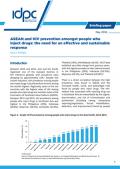
Resource | Publications,
Between 2010 and 2016, Asia and the Pacific registered one of the steepest declines in HIV infections globally, with prevalence rates dropping by approximately 13%. Despite this overall reduction, HIV prevalence among people who inject drugs in Southeast Asia remains among the world’s highest. Regionally, seven of the ten countries with the highest rates of HIV among people who inject drugs are member states of the Association of Southeast Asian Nations (ASEAN).
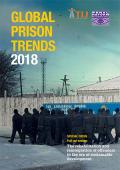
Resource | Publications,
Global Prison Trends 2018 is the fourth edition in Penal Reform International’s annual series, published in collaboration with the Thailand Institute of Justice. The report analyses trends in criminal justice and the use of imprisonment and, as in previous years, these show that while overall crime rates around the world have declined, the number of people in prison on any given day is rising.

Resource | Presentations,
The objectives of this presentation are to estimate the prevalence of HIV and syphilis among people who inject drugs (PWID) and people who use drugs (PWUD) and Hepatitis C Virus (HCV) among PWID, to examine HIV risk behaviors among PWID and PWUD: illicit drug use behaviors, substance abuse, and other health issues including healthcare seeking behaviors and exposure to HIV programs and to estimate the national population size of PWID and PWUD by types of drug used.
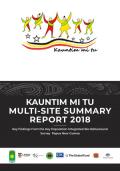
Resource | Publications,
Kauntim mi tu (KM2), an integrated bio-behavioral survey (IBBS) of women and girls who sell and exchange sex (FSW) and men who have sex with men and transgender women (MSM/TG), provides much needed information to support the scale up of essential HIV prevention and treatment services for these populations.
KM2 was conducted in three cities (Port Moresby, Lae, and Mt. Hagen) between June 2016 and December 2017 using respondent-driven sampling (RDS) to recruit participants. Kauntim mi tu had two goals: 1) to conduct updated population size estimations of FSW and MSM/TG in Papua New Guinea; and 2) to collect representative bio-behavioral data about FSW and MSM/TG in order to inform HIV and STI prevention and treatment services and policy. This document presents findings among FSW in all three cities.
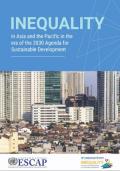
Resource | Publications,
Inequality in Asia and the Pacific is on the rise. Many countries, including those held up as models of dynamism and prosperity, have experienced a widening of existing gaps, accompanied by environmental degradation. Market-led growth alone is not sufficient to deliver a prosperous, sustainable future for all.
This report takes a novel approach by focusing on multiple aspects of inequality – inequality of outcomes, of opportunities and of impacts. It also pays special attention to the potentially transformative role of technology and the impact that the incipient Fourth Industrial Revolution may have on inequality.
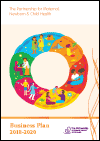
Resource | Publications,
Improving the health and well-being of women, children and adolescents is the greatest collective endeavour of our time. We live in a world of gross inequality and injustice, but also of unprecedented progress. Since 1990, maternal mortality — indicating deaths of women during pregnancy and childbirth — has fallen by 44%, and the death rate for children under age 5 has fallen by 53%. This progress has been achieved largely through the power of partnerships. PMNCH has worked since its inception in 2005 to forge and strengthen these partnerships.
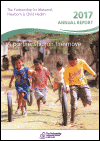
Resource | Publications,
Every Woman Every Child (EWEC), developed by PMNCH partners in 2010, brings the voice of women, children and young people to centre stage in the Sustainable Development Goal (SDG) era. In 2015, the United Nations (UN) launched the EWEC Global Strategy for Women’s, Children’s and Adolescents’ Health (Global Strategy), building on momentum under the EWEC movement’s first Global Strategy (2010– 2015) and aligning with SDGs.

Resource | Publications,
The HIV surveillance system in Hong Kong comprises 5 main programmes to provide a detailed description of the local HIV/AIDS situation. They are (a) voluntary HIV/AIDS case-based reporting; (b) HIV prevalence surveys; (c) sexually transmitted infections (STI) caseload statistics; (d) behavioral studies; and (e) HIV-1 genotyping studies. All data are collected, analysed and disseminated regularly by the surveillance team of Special Preventive Programme (SPP), Centre for Health Protection (CHP), Department of Health(DH). At present, the latest HIV/AIDS statistics are released at quarterly intervals at press media briefings and in electronic format (http://www.aids.gov.hk). Data from various sources are compiled annually and released in this report.
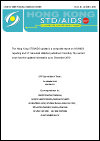
Resource | Publications,
The Hong Kong STD/AIDS update is a composite report on HIV/AIDS reporting and STI caseload statistics published 3 monthly. The current issue has the updated information up to December 2018.

Resource | Fact Sheets,
In June 2017, the World Bank and the International Center for Research on Women released groundbreaking results from a major three-year research study on the global costs of child marriage. The study found that child marriage is not only a human rights violation having a major impact on the wellbeing of girls, it also has major negative impacts for households and national economies. This brief highlights key messages from the study that are important for helping policymakers, finance ministers and governments to understand how ending child marriage can save money and alleviate poverty.





